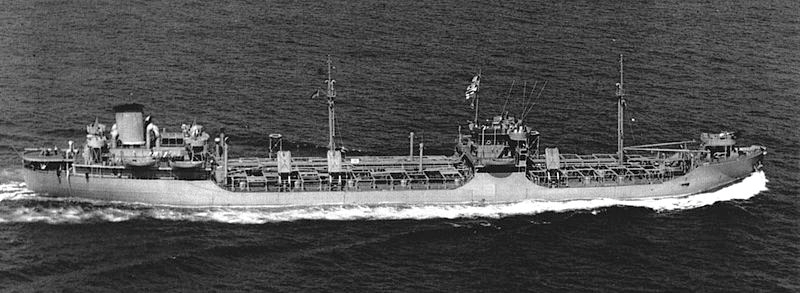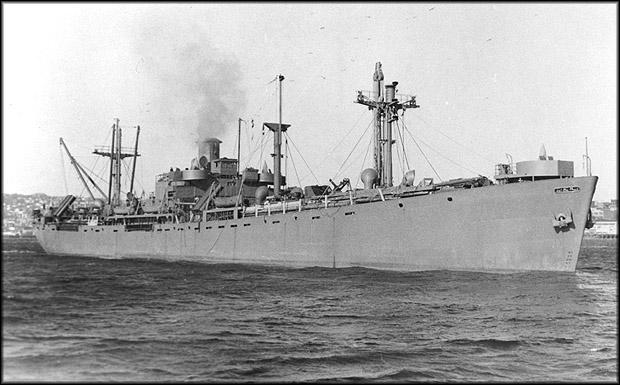Military ServiceJoining the US NavyCouncilman Dick Riddell may be known for many accomplishments in the city of Yucaipa over the years, but his service to his beloved country during World War II is equally impressive. Riddell grew up in San Bernardino. His family had a deep sense of patriotism. His mother’s brother was killed in France during World War I. His father, Stanley William served in the Marines during World War I. His father’s brother also died from injuries sustained during WWI. |
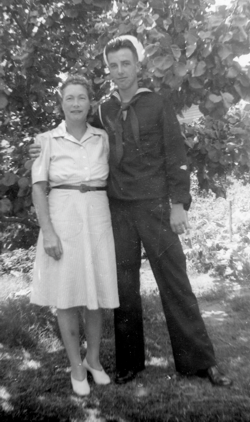
|
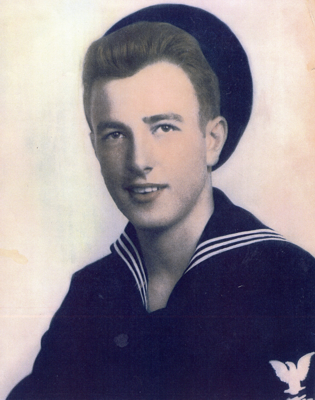
|
Riddell was 16 years old and a senior in high school when the Japanese bombed Pearl Harbor. After graduating the following June, he enlisted in the United States Navy at age 17. Like most everyone else who grew up in the great Depression, he was well prepared for the rigors and discipline of boot camp. After boot camp, he was sent to radioman and signalman school then assigned to the Naval Armed Guard. Few people knew what the Naval Armed Guard was. The Naval Armed Guard was established due to the heavy loss of merchant vessels. |
Serving in the Pacific Theater“Because of the high vulnerability of enemy attacks on cargo ships and tankers a Navy Armed Guard contingency consisted of 25-28 gunners and one or two radiomen were assigned to vessels for protection,” said Riddell. These ships featured eight 20 mm aircraft guns, and a three-inch 50 and a four-inch 50 cannon or a five-inch thirty-eight cannons. His first assigned ship was a tanker, merchant ship carrying high-octane gas. There were many ships being sunk at that time, the radioman was the last to abandon the ship, because he had to radio the ships location to warn other cargo ships to avoid that area.
| |
|
“We never knew what our destination would be,” said Riddell. “Because it was given to the captain of the ship in a sealed envelope which he couldn’t open until we left port and were out to sea. We always sailed in a zig-zag course so as to prevent being an easy target for submarines firing torpedoes.” His first voyage was to Australia, because the Japanese at that time pretty much controlled the Pacific Ocean and all the islands. “I went to Melbourne, Adelaide, and Port Pirie on the south coast and Perth on the Indian Ocean,” he said. “Australia in 1943 reminded me of what the United States must have looked like in the eighteen nineties.” His second voyage on the same tanker carrying gasoline was to Milne Bay, New Guinea. |
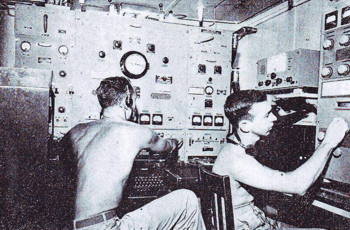
|
|
“When we were close to our destination a Japanese submarine launched a torpedo at us,” he said. “Fortunately and probably because of our zig-zag course, it missed. It was probably their last torpedo because they surfaced and fired on us. Their cannon was probably a three-incher. Our five-inch 38 kept them at bay. The tanker was a great ship with a top speed of about 25 knots, so we soon out distanced them.
Because we had radioed our location, the following morning a United States Destroyer showed up and escorted us the rest of the way.”
“As the war progressed with Americans retaking all the islands the Japanese had conquered, our ships continued to deliver ammunition and supplies to our forces,” he said. Riddell sailed mostly on slow-moving Liberty ships that had a top-speed of 10 to 12 knots. In addition to New Guinea, some of the islands he traveled to included New Caledonia, New Hebrides, Tulagi, the Marshall Islands, Gilbert Islands, Guam, Saipan and Tinean in the Mariannas. He also sailed through the Panama Canal and saw service on the Atlantic and Caribbean Theaters. According to Riddell, his most interesting voyage was sailing on a forty-foot long wooden harbor tugboat from San Francisco to Finchhaven, New Guinea, a distance of about eight thousand miles with stops in both Oahu and the Ellis Islands for refueling. The tug had a crew of eight, including Riddell, who was the sole Navy man aboard.
Riddell’s father died in May 1944. His address while in the Armed Guard was APO San Francisco. His mother notified both the Navy and Red Cross to let him know, but because of his changing of ships and island hopping in the South Pacific, he didn’t receive the message and didn’t learn of his father’s death until he reached the United States months later. Riddell estimated he sailed on more than 15 ships, covering over 200,000 miles during the war. After the Japanese surrendered, Riddell served in the occupation forces in Tokyo Japan several months before being discharged. |
|
Returing Home to the United StatesThe three blue stars in the Riddell residence were hung with pride. The Blue Stars Mothers of America was formed to encourage military families to display a flag with a blue star for each son/daughter serving in the war. All across the United States, homes of military families proudly honored their loved ones with the stars, while it also symbolized pride in the nation and helped promote war efforts. In addition to Dick Riddell, his brother Stanley William Jr. enlisted in the Navy and his sister Donna Patricia served as an Army Nurse during WWII. |
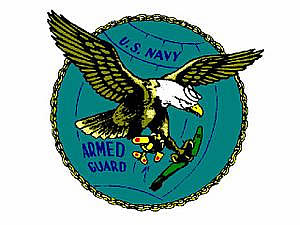
|
|
*Most of the text and pictures were first published in the News Mirror by Rachael Gustuson. |
|
